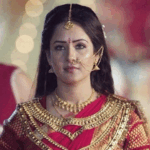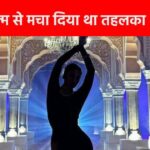9 minutes agoAuthor: Kiran Jain
- copy link

The most awaited film ‘Bhool Bhulaiyaa 3’ will be released worldwide on November 1 on Diwali 2024. A few days ago, a glimpse of the song ‘Ami Je Tomar 3.0’ has been released, although it is not the full song. This most popular song of ‘Bhool Bhulaiyaa’ franchise has been presented in a new style.
The film’s cinematographer Manu Anand shared his experience of shooting this song in a conversation with Dainik Bhaskar. He described working with Vidya Balan and Madhuri Dixit as a big responsibility and discussed his attention to the aesthetics, colors, and lighting of the sets. Read some key excerpts from the conversation:

How was your experience with the song ‘Aami Je Tomar Sudhu Je Tomar’? How many days did the shooting last?
We shot this song in 5 days. The 5 days were very fun. I personally enjoy shooting songs. If you look at my filmography, my songs have always been enjoyable. When we came to know that this song has to be shot with Vidya ji and Madhuri ji, we felt that we have a big responsibility. This song had to be made memorable, because this moment was special in itself. Working with Vidya ji and Madhuri ji, who are both big names in the world of dance, was like a dream come true.
Our choreographer Chinni Prakash ji also worked very hard. The sets were made very luxurious, especially in the Durbar Hall. I took special care of colors and lighting so that her face felt like a light. The camera movements were also designed to make the song look dynamic and complement the choreography. There is also a long single shot in this song where the movement of the camera and actors seems like a dance. It took several takes to get that shot, but everyone worked hard and ultimately we got the look we wanted.

This song was shot continuously for 5 days, can you tell how these 5 days turned out?
Our preparations had started even before the shooting. The first set lighting, design and rehearsals took place. Then when the actors came on the set, we decided every movement of the song shot-by-shot. Every shot of the song was designed by Chinni Prakash ji, Anees Bhai and I. If any shot needed improvement in expression or camera angle, Anees Bhai would tell him to do another take. We did not make any compromise in this song. Every shot was not finalized until the entire team was satisfied. It was shot in 12-hour shifts for 5 consecutive days.

How many cameras were installed for the song and how many team members were present?
We had three cameras for that song, but every take was done with a single camera, because the actors’ performance was being covered properly with one camera. The remaining cameras were for different reasons – like one camera was on the study camp, the second on the screen and the third on the dolly. We used to change the camera according to the shot so that the shooting could speed up. Using three cameras during the dance would have made it difficult to design the shots. So every line, every movement had a particular frame so that the song looked good on the screen.
Talking about the team, there were usually four to five hundred people on the set. Even if we leave aside the extras, there would be more than four to five hundred people, which included lighting, art, costume, production, carpenter, light man. The atmosphere was such that even people who did not work on the floor would come to the floor and watch mesmerized. There was so much crowd that the production had to be taken out again and again. Actually, Kartik Aryan did not have shooting that day, yet he came to the set on a holiday. When asked, he said that he had come to watch the performance of Vidya Balan and Madhuri. Everyone wanted to be a part of this historical scene.

What special attention has to be paid to camera placement and lighting in a horror comedy film, what is your biggest challenge in this?
Location plays a big role. To be a good cinematographer, it is important to get a proper location. The game of lighting is very important in horror comedy. Horror should be dark, but not so dark that nothing can be seen. Here a fine balance has to be struck, just as children are often afraid of the dark or play in a dark room, there is a game of scaring and laughing. Lighting increases suspense in horror, and then suddenly comedy lightens the atmosphere. The mix is a little moody and a little bright, and it’s that fun challenge that sets this genre apart.
Which locations were chosen for this film?
Our entire team shot at many places. We left Mumbai, went to Rajasthan, Gujarat, Bengal, and Madhya Pradesh. Finally, the setting of the film has been done in Bengal, where a large part has been shot. Our main mansion, whose door will open, has been shot in Orchha, Madhya Pradesh. Also, we have sets in Mumbai, so the film was shot between live locations and sets.

Where specifically was the shoot in Bengal and Madhya Pradesh?
In Bengal we shot at many places in and around Kolkata. We stayed at the Oberoi Hotel, and shot in Howrah, as well as in some old havelis. Shooting also took place on Howrah Bridge. We shot at Usha Ghat in Orchha in Madhya Pradesh. The Jahanagar Palace there has been shown as Bengal in the film. There was a schedule of at least 90 to 100 days.
Did any real scary incident happen during shooting that scared the entire team?
Yes, when we were shooting in Bengal, our hotel was quite good, but later we came to know that the hotel was haunted. At first no one knew, but there was a board in the lobby of the hotel, in which it was written that strange incidents had happened in this hotel. People were a little scared after reading about that. For those who are afraid of ghosts, this atmosphere had become a bit tense. The actors also stayed in the same hotel and later we came to know that some accident had happened there about 100 years ago. Since then people have had strange experiences there.

What are the special things in Anees Bazmi’s way of working? What things do he pay most attention to?
Anees Bhai always maintains a pleasant atmosphere on the set, but is very particular about every detail of the film, especially the costumes and look. He has done more than 70 films, and his experience is like learning for me. He gives every member full opportunity for creative expression. If I show some new design, they get very excited and say – Hey man, this is amazing, do some more.
It’s fun working with him because he always motivates the team. The entire team is impressed by his behaviour. The relationship with them is always full of understanding and cooperation.



